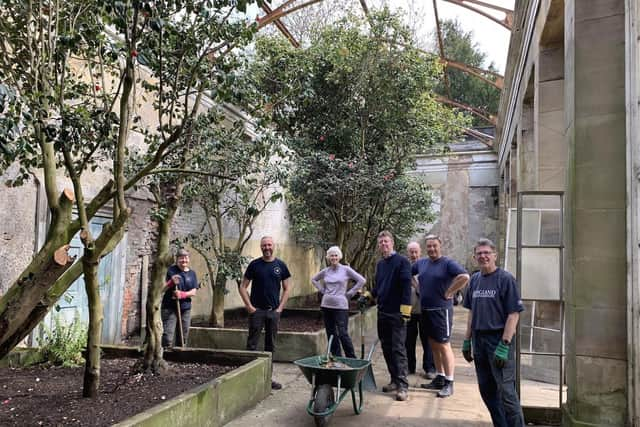New tea house at Wentworth Woodhouse will attract 'Camellia fanatics from all over the world'
The shrub has legion of fans, dating back to the early 19th century when they were introduced from the Far East to stately homes like Wentworth Woodhouse.
How they ended up there is a mystery, says head gardener Scott Jamieson, who thinks they may have been gifts from friends and relatives on their frequent visits.
Advertisement
Hide AdAdvertisement
Hide AdThe first they can put a date to is one of the oldest camellias in cultivation, a Camellia japonica Alba Plena from 1813, with porcelain white petals.


Wentworth Woodhouse fell into decline from the late 1900s and when the Preservation Trust took over in 2017, the ruined and roofless grade II* listed Camellia House was on the Heritage At Risk Register.
However, despite being open to the elements, going through two World Wars, and being sited just yards from open-cast coal mining, the long-forgotten camellias had flourished.
The building the plants sit in is undergoing a £4m restoration and will reopen as a tea house next summer – fittingly tea is made from the fresh or cured leaves of the Camellia sinensis.
Advertisement
Hide AdAdvertisement
Hide AdDespite having being shrouded in timber frames and thick plastic sheeting to protect them since September when work began, the plants seem to be thriving. A much appreciated gift of £5,000 of ultra-violet lighting systems from Kent-based horticultural lighting manufacturer Lumatek has helped keep up light levels.


Scott, a self-confessed “camellia anorak”, who is growing hundreds of cuttings, said: “We have one or two flowering at the moment. You get the daintiest of flowers.
"They only flower for a short season but they create this glossy showy background for everything else in the garden.”
He has high hopes for the Camellia House when it reopens: “There’s Camellia fanatics from all over the world who would love to come and see this collection.
Advertisement
Hide AdAdvertisement
Hide Ad"(Collections like this) are few and far between in the British Isles which have been given so much care and attention. Tea is a great leveller – everyone boils a kettle and leaves of some sort are put into it.
"The camellias are ornamental, but still speak of tea and all the ceremonies that go with it.”
After plain water, tea is the most widely consumed drink in the world. Drunk since ancient times in the Far East, it became fashionable in the 17th century among the English, who started to plant tea on a large scale in British India.
Specialist conservation architects Donald Insall Associates and York-based construction company William Birch & Sons Ltd are working on the project.
In February a new glass roof will be winched into place over the camellia beds and the area where visitors will take tea.
